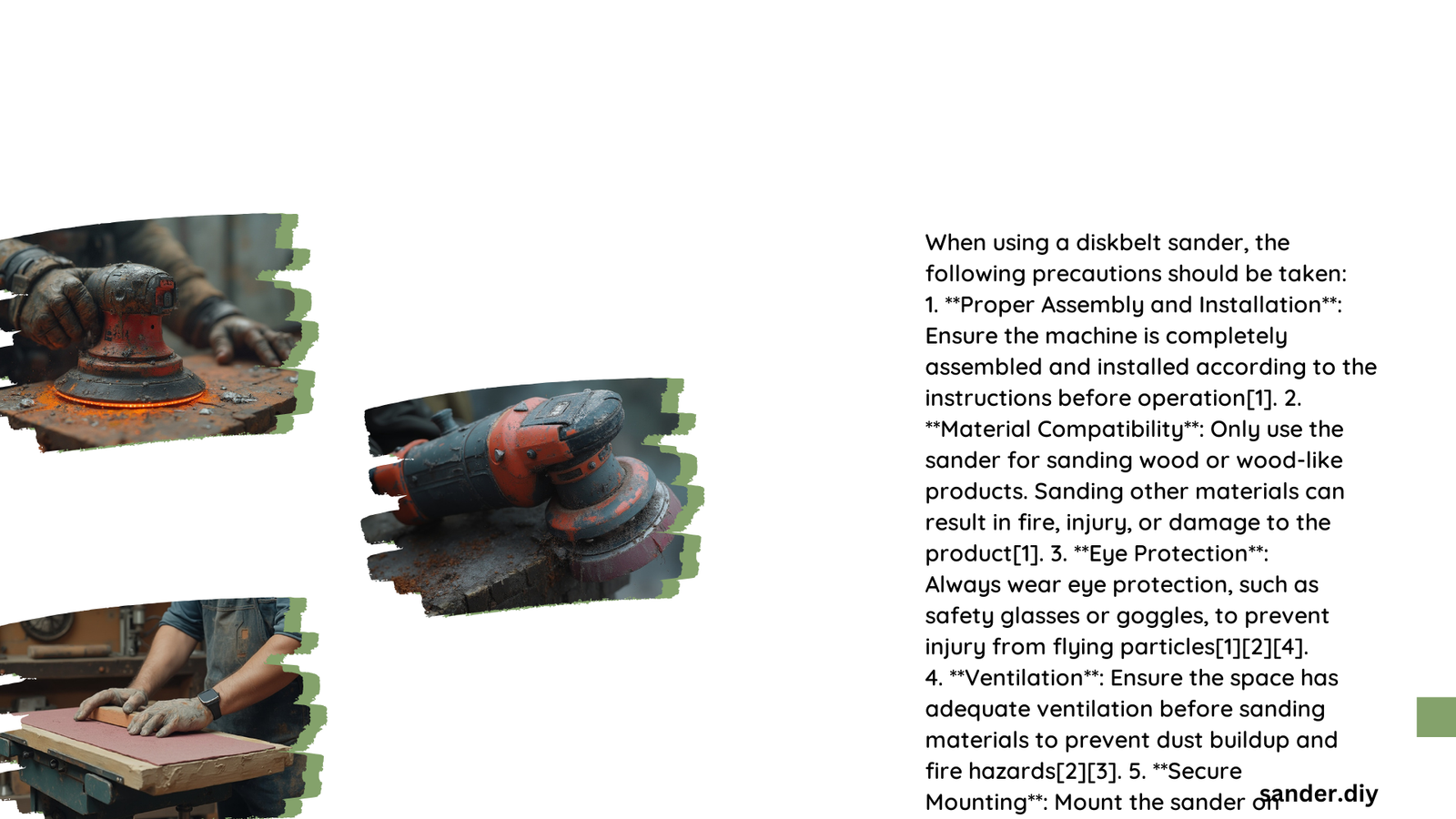Diskbelt sanders are powerful woodworking tools that demand meticulous safety protocols. Understanding and implementing comprehensive precautions can prevent serious injuries, equipment damage, and potential workplace accidents. This guide provides an in-depth exploration of essential safety measures, protective techniques, and best practices for operating diskbelt sanders effectively and securely.
What Personal Protective Equipment Should You Wear?
Personal protective equipment (PPE) forms the first line of defense when operating a diskbelt sander. Proper gear can significantly reduce the risk of injury and exposure to harmful particles.
Safety Eyewear Protection
- Use ANSI Z87.1 certified safety glasses
- Consider full-face shields for additional protection
- Select impact-resistant lenses with side shields
Respiratory Protection
- Wear N95 rated dust masks
- Use respirators for extended sanding sessions
- Select masks appropriate to material being sanded
| PPE Type | Protection Level | Recommended Usage |
|---|---|---|
| Safety Glasses | Basic Eye Protection | Light Sanding |
| Face Shield | Comprehensive Coverage | Heavy Material Removal |
| Dust Mask | Respiratory Protection | All Sanding Operations |
How Can You Secure Your Workpiece?

Proper workpiece management is crucial for preventing unexpected movements and potential accidents.
Clamping Techniques
- Use sturdy clamps or vises
- Ensure workpiece is firmly supported
- Avoid hand-holding small pieces
Positioning Strategies
- Position material against stable backstop
- Maintain consistent contact with sander surface
- Use miter gauges for precise alignment
What Electrical and Mechanical Precautions Matter?
Electrical and mechanical safety involves multiple critical considerations:
- Power Management
- Disconnect power before belt/disc changes
- Inspect electrical cords regularly
-
Use grounded outlets
-
Mechanical Checks
- Verify belt tension (1/8 inch deflection maximum)
- Confirm proper belt tracking
- Check for belt/disc damage before operation
How Should You Prepare Your Workspace?
Environmental Considerations
- Ensure adequate ventilation
- Maintain clean, organized work area
- Remove potential tripping hazards
Dust Management
- Use dust collection systems
- Clean workspace after each sanding session
- Prevent dust accumulation on equipment
What Are Common Mistakes to Avoid?
- Never wear loose clothing
- Avoid sanding extremely small pieces
- Do not force material through sander
- Keep hands away from moving parts
- Maintain focus during operation
Technical Maintenance Recommendations
- Regular equipment inspection
- Periodic belt/disc replacement
- Lubricate moving parts
- Store in dry, clean environment
Emergency Preparedness
- Keep first aid kit nearby
- Know emergency shutdown procedures
- Have fire extinguisher accessible
- Understand basic wound treatment techniques
Advanced Safety Tips
- Use push sticks for narrow pieces
- Maintain consistent sanding pressure
- Work against belt/disc rotation
- Never disable safety guards
Conclusion
Diskbelt sander safety requires comprehensive knowledge, proper equipment, and consistent practice. By implementing these precautions, woodworkers can minimize risks and create a safer working environment.
